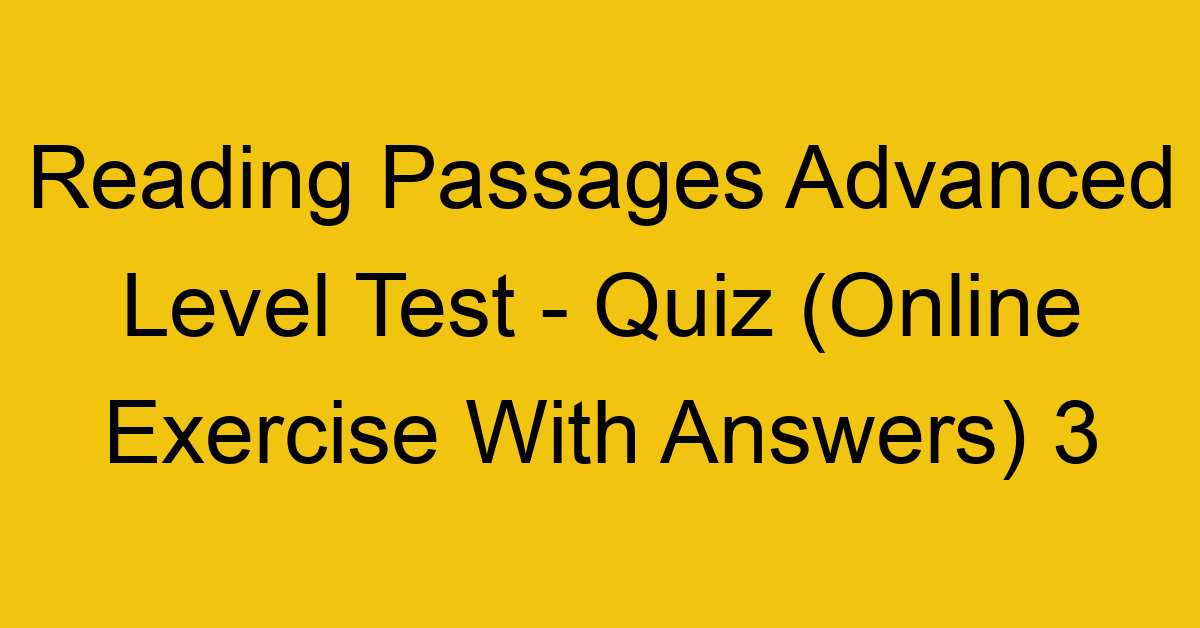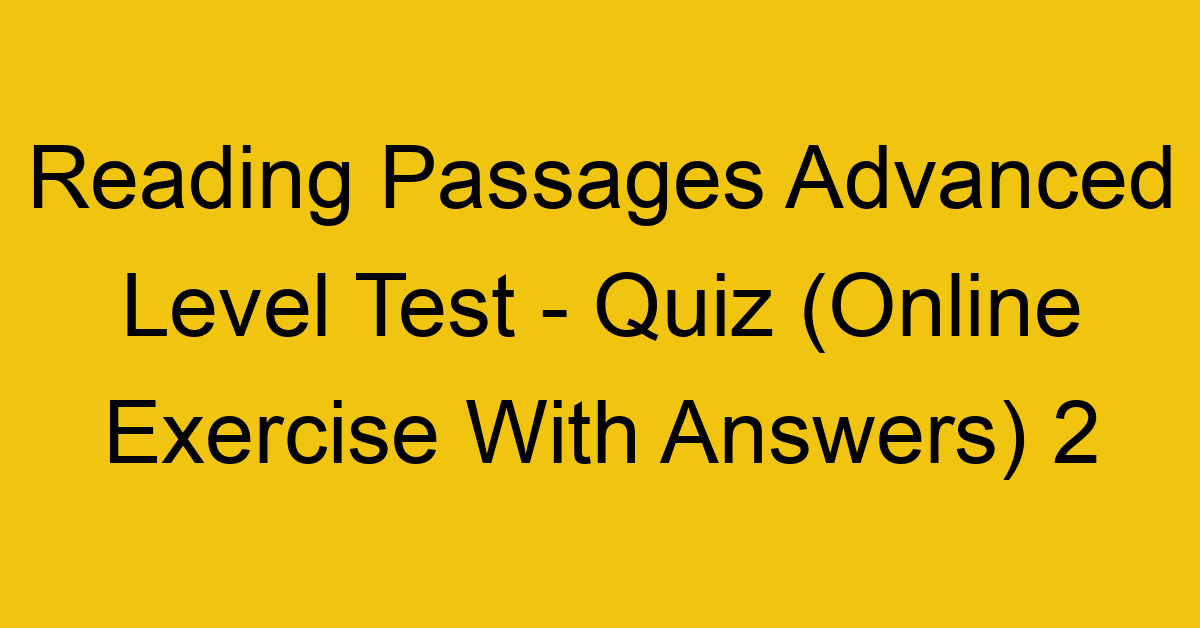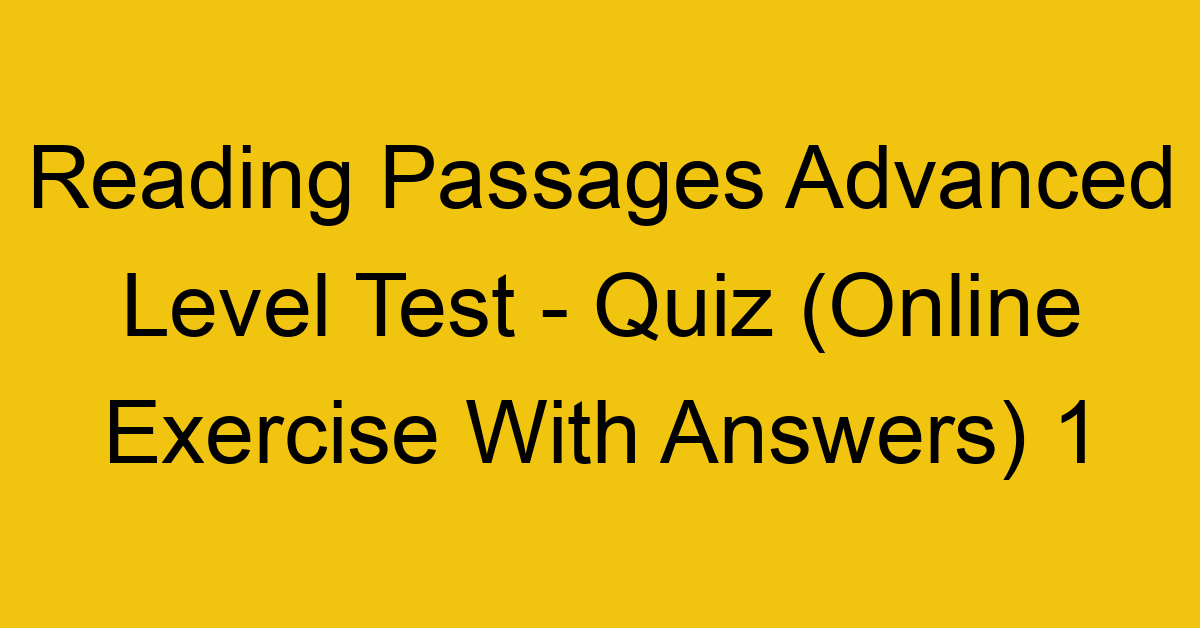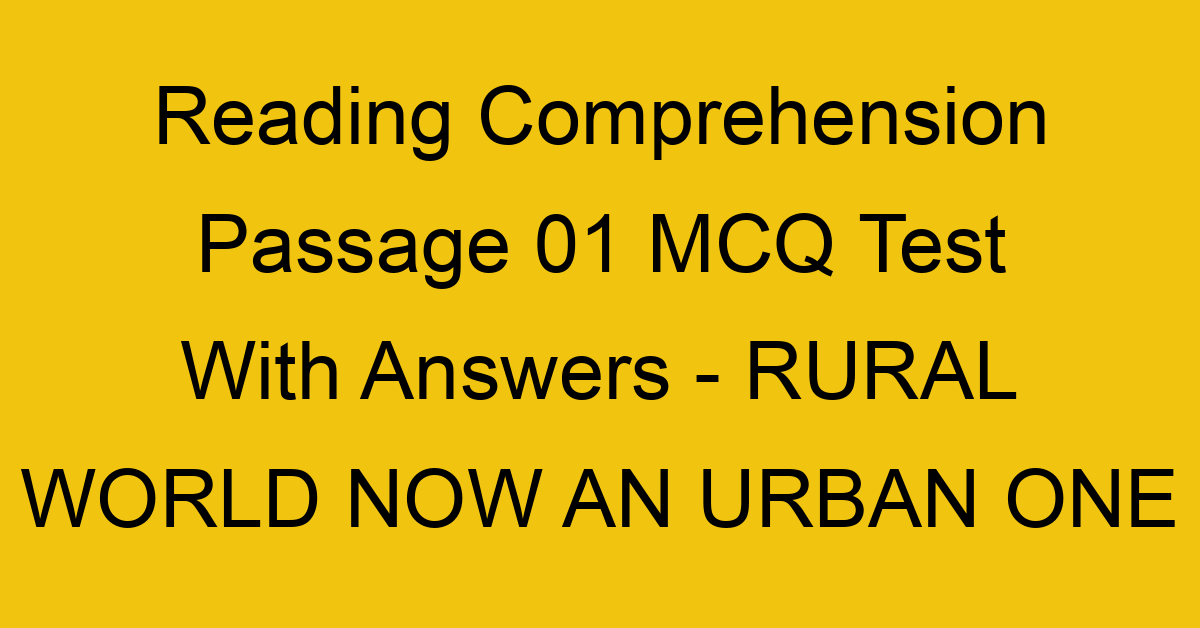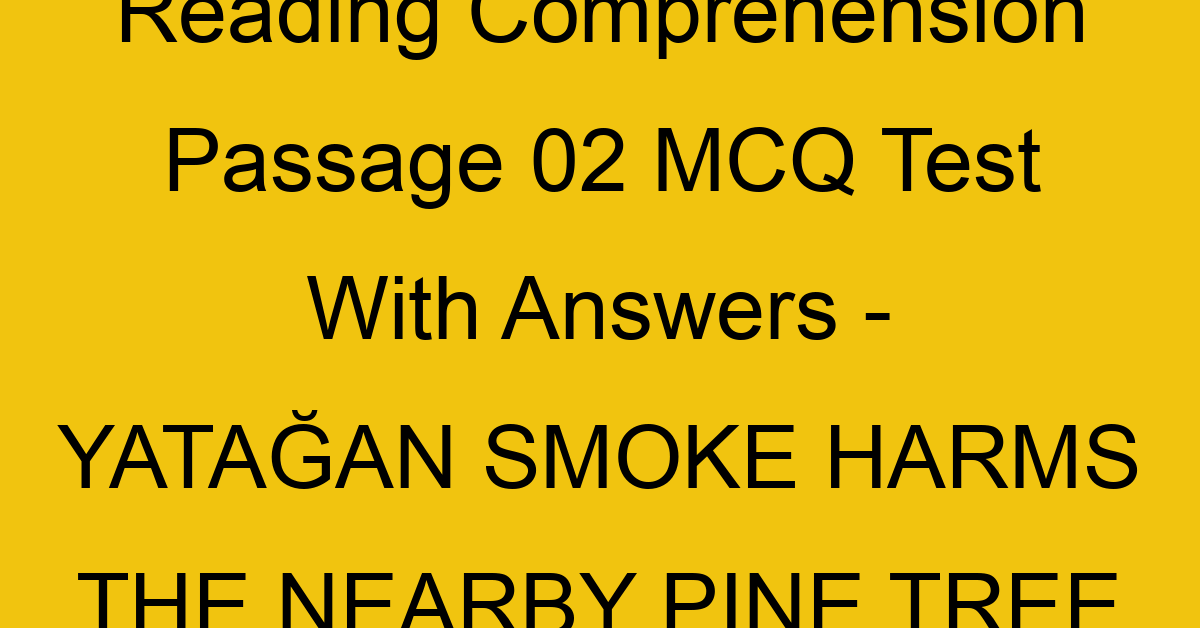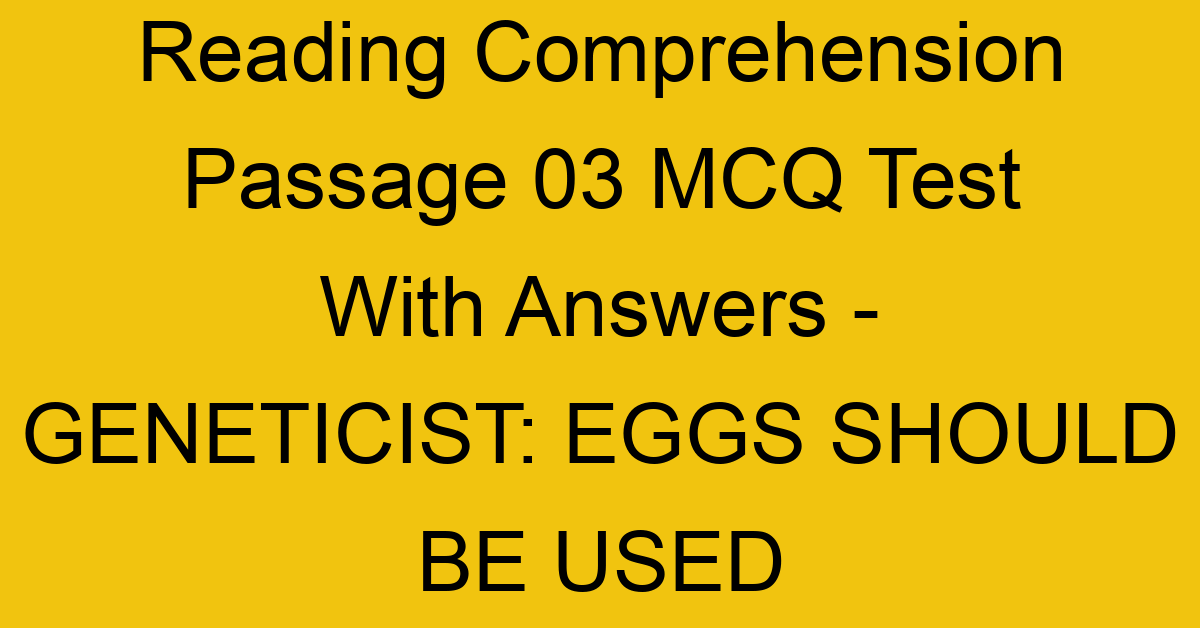This fourth reading passages test contains 24 multiple choice questions on the topic of reading passages of the English language. Both English learners and ESL teachers can use this online exercise as a revision to check the knowledge of reading passages.
Reading Passages - Advanced Level Test 4
Question 1 |
(Please note: The following questions are related to a specific reading passage, which is available solely before the first question. Remember, it may be helpful to refer back to the reading text while answering the questions to ensure accuracy.)
He may not inherit everything from his father. But King George Tupou V, Tonga’s new monarch, who has been sworn in, but not formally crowned, following the death of the battleship-sized King Taufa’ahau Tupou IV on September 10th, already has a picturesque palace, the royal title and a good deal of respect from his 110.000 subjects in Tonga. The big question is whether he will bow to the pleas of the country’s growing pro-democracy movement, and limit his throne’s huge powers.
It is understood from the passage that King George Tupou V _____.
A | learned all he knows about the royalty from his father |
B | owes his father everything |
C | has no respect towards King Taufa’ahau Tupou IV |
D | hasn't been declared as the new King of Tonga legally yet |
E | lost his father during democracy movement |
Question 2 |
One may infer from the passage that in Tonga _____.
A | Tupou V will not accept being the new king |
B | King George Tupou V inherited a huge amount of money from Tupou V’s father |
C | most of people reject accepting his authority |
D | hasn't been able to get his royal respect and title yet |
E | there is spreading demand for regime change |
Question 3 |
As concluded in the passage that the monarch in Tonga _____.
A | has failed to notice the growing influence of pro-democracy activists on the subjects |
B | has been supporting the leading figures of the country’s growing pro-democracy movement for a long time |
C | isn’t a matter of the royal family |
D | has enormous authorization in ruling the country |
E | has played a modernising role in governing the country in recent years |
Question 4 |
Peter Yellowlees, a professor of psychiatry at the University of California, Davis, has been teaching about schizophrenia for 20 years but says that he was never really able to explain to his students just how their patients suffer. So he went online, downloaded some free software and entered Second Life. This is a "meta-verse" (i.e., metaphysical universe), a three-dimensional world whose users, or "residents", can create and be anything they want. Mr Yellowless created hallucinations. A resident might walk through a virtual hospital ward, and a picture on the wall would suddenly flash the word “shit face”. The floor might fall away, leaving the person to walk on stepping stones above the clouds. An in-world television set would change from showing an actual speech by Bob Hawke, Australia’s former prime minister, into Mr Hawke shouting, “Go and kill yourself, you wretch!” A reflection in a mirror might have bleeding eyes and die. When Mr Yellowless invited, as part of a trial, Second Life’s public into the ward and 73% of the visitors said afterwards that it “improved (their) understanding of schizophrenia.”
According to the passage, Second Life _____.
A | is a software enabling its users to create a 3-dimensional world in which they can be and do anything they wish |
B | is a computer game designed for university students who study psychiatry |
C | is a computer programme created just for fun and leisure |
D | is a metaphysical online world in which its users are passive and can give no reactions |
E | is a built virtual online world whose population and economy are growing gradually |
Question 5 |
It is stated in the passage that by means of Second Life, Peter Yellowlees _____.
A | experienced a failure in his attempts to make his students comprehend schizophrenia better |
B | gained great fame as a psychiatrist throughout the world |
C | could download free software easier than before |
D | tried to improve his understanding of how his patients suffer from schizophrenia |
E | produced sample hallucinations and tried to explain to his students how the schizophrenics suffer |
Question 6 |
One may infer from the passage that patients who suffer from schizophrenia _____.
A | pretend to be normal while they are seeing hallucinations |
B | can be cured through the hallucinations created in Second Life |
C | can commit suicide because of their hallucinations |
D | are the participants of Peter Yellowless’ trial of his online hallucinations |
E | believe that they live in a metaphysical universe and they are wretch |
Question 7 |
Lame from birth, yet with a talent for landing on his feet, Charles Maurice de Talleyrand-Périgord was a natural subject for cartoonists. As a statesman and diplomat, he was always at or never far from the center of power through every upheaval that shook France—and Europe—between the fall of the Bastille and the collapse of the restored Bourbon monarchy in 1830.
The 'prince with six heads', as one caricature nicely pictured him, was a bishop in the ancien régime, a revolutionist in 1789, a diplomat for Napoleon, a minister to Louis XVIII, and lastly—by which time he was already in his late 70s—an ambassador in London for Louis Philippe, the 'citizen king'. Such frequent shifts inevitably earned him many enemies. But with each turn of the carousel, former foes would become friends again. Talleyrand rose late, dressed slowly, and played a lot of whist. He took a similar approach to politics, using time and delay to his advantage.
One may infer from the passage that as a politician, Talleyrand _____.
A | had a view of what was good for France and also Europe, to which he stuck through revolution, war and restoration |
B | never forget his old partnerships throughout his career |
C | always managed to be in a good, high and powerful position under any circumstances in France |
D | could never be shrewd enough to manipulate the chaotic environment of his era |
E | was a corrupt and immoral opportunist of exaggerated reputation interested mainly in his family name |
Question 8 |
It can be understood from the passage, Talleyrand _____.
A | served at least three rulers, having different political responsibilities |
B | couldn’t play whist well |
C | had a strict habit of getting up early |
D | was harshly criticized by the cartoonists at his time |
E | was never at the centre of power |
Question 9 |
As is stated in the passage, Talleyrand _____.
A | wasn't a successful statesman at all |
B | was believed to have six heads by people who never saw him |
C | never forgave his enemies all his life |
D | had a handicap in his feet |
E | worked as a minister in London for Napoleon |
Question 10 |
The impact of the American periodical press also has been technological and social. The large, mass-circulation magazines have influenced the smaller magazines, which in many instances seek to imitate their appearance and to emulate the high quality of their printing, layout, and make-up. They also have influenced magazines around the world. Europe, for example, is given to publishing magazines resembling “Life" and “Look”, and almost no heavily industrialized country is without its imitator of “Time”. An example of this is “Der Spiegel” in Germany, The social effect has to do with the discharge or failure to discharge its social responsibilities. These include the obligation to provide the people with a fair presentation of facts, honestly held opinions and truthful advertising.
It’s understood from the passage that news magazines like “Life, Look, and Time”_____.
A | are resented in European Countries |
B | sell very well throughout the world |
C | are respected as models for foreign magazines |
D | do not discharge social responsibilities at all |
E | are sold extremely expensively on the market |
Question 11 |
According to the passage _____.
A | American periodical press has no contribution to its European counterpart |
B | European magazines know very little about the American ones |
C | smaller magazines have influenced the bigger ones throughout the history |
D | der Spiegel is a magazine that originated in the USA. |
E | nearly all the heavily industrialized countries have a magazine resembling to "Time" |
Question 12 |
As concluded in the passage, magazines _____.
A | shouldn’t compete with television for advertising |
B | ought to be subsidized |
C | must imitate European models |
D | shouldn’t accept untruthful advertising |
E | have to make a profit at any cost |
Question 13 |
A team of astronomers from the Institute of Technology, led by Djorgovski, may have glimpsed the dawn of our universe. In 2001, this team reported that it had spotted the "cosmic renaissance,” the era when the first starlight shone through the cosmos. Just days earlier, a team from the Sloan Sky Survey had announced finding evidence of the cosmic “dark ages”— the period of about half a billion years after the Big Bang when dark fog filled the newly created space of our universe. The cosmic renaissance brought an end to the dark ages, as the first galaxies and quasars burned through the murky cosmos, making it transparent. The teams used data collected with powerful telescopes to observe the light emissions of quasars, the most distant known objects in the universe. Quasars, which are amazingly bright, can essentially offer snapshots of the universe from hundreds of millions of years ago.
The latter team aforementioned has declared that _____.
A | in the first period of our universe was full of dark fog |
B | they found out the proof of the dark age of the universe |
C | cosmic renaissance happened after one of the stars shone |
D | the rise of the cosmos was believed to start with the first light of the sun |
E | dark ages were brought an end with the cosmic renaissance |
Question 14 |
What do the two teams have in common?
A | Both teams have mutual interests in how to scrutinize the history of the universe. |
B | The teams worked on the same project in the twentieth century. |
C | Not only the Institute of Technology but Sloan Sky Survey have astronauts who have experience in space exploration as well. |
D | The devices used by the teams for gaining information on quasars were powerful telescopes. |
E | The main subject of the teams were about Big Bang. |
Question 15 |
We can infer from the passage that quasars _____.
A | the light of which reaching us basically comes from a very distant time |
B | which are surprisingly bright stars can give us details about the history of the galaxies |
C | whose photographs taken by a team of scientists inform the danger experienced during the history |
D | have always been in flames since the beginning of the universe |
E | are the farthest known objects detected by huge telescopes |
Question 16 |
For those of us without a family crest and signet ring, there is a place a few inches above the finger where social standing can still be displayed - the wrist. With its ticking heartbeat, the mechanical wristwatch is alive and never felt better. And for most people, the very definition of a luxury watch is a Rolex. It has a mystical aura of high fashion, high quality and high price. It's the most popular watch, with an estimated 750,000 sold annually and even more changing hands each year in the second-hand market. The reason for Rolex's stunning success is the firm's genius at marketing to people who aspire to own and can afford to buy, the accoutrements of popular culture's nobility. The typical Rolex buyer is seeking to have something their neighbours and friends either have or wish they had. Rolex has struck a balance between making a product that is just expensive enough so not everyone will own one, but just affordable enough for it to be within the reach of many.
One point emphasized in the passage is that _____.
A | as it was in the old days, it is still indispensable to have a signet ring or a family crest for those who want to own the highest social rank |
B | Rolex stands as the epitome of Swiss watchmaking excellence |
C | the wristwatch may be regarded as a symbol of social status and luxury by most of the people today |
D | as a prestigious brand, Rolex also determines all kinds of fashion worldwide |
E | but for its prestige and price, Rolex defies its own image in the secondhand market |
Question 17 |
The author relates the success of Rolex _____.
A | to its being so expensive and prestigious |
B | to its smart marketing system which determines and addresses to the target customer |
C | in an exaggerated style |
D | so clearly that even the rival firms must respect it |
E | to the people who work in its administration and marketing departments |
Question 18 |
One conclusion we can draw from the passage is that _____.
A | Rolex holds the biggest share of the electrical appliance market in the world |
B | the standard Rolex buyer is always in the pursuit of possessing the items which their neighbours already have |
C | Rolex is believed to earn $ 750,000 annually although it's intensely secretive about its financial affairs |
D | Rolex can be defined as one of the most popular watches of all |
E | Rolex has managed to make a product that is attainable for many despite its price |
Question 19 |
Some modern anthropologists hold that biological evolution has shaped not only human morphology but also human behaviour. The role those anthropologists ascribe to evolution is not of dictating the details of human behaviour but one of imposing, constraints - ways of feeling, thinking, and acting that "come naturally" in archetypal situations in any culture. Our "frailties" emotions and motives such as rage, fear, greed, gluttony, joy, lust, and love- may be a very mixed assortment quality: we are, as we say, "in the grip" of them. And thus they give us our sense of constraints. Unhappily, some of those frailties and our need for ever-increasing security among them are presently maladaptive. Yet beneath the overlay of cultural detail, they, too, are said to be biological in direction, and therefore as natural to us as are our appendixes. We would need to comprehend thoroughly their adaptive origins in order to understand how badly they guide us now. And we might then begin to resist their pressure.
The author implies that control to any extent over the "frailties" that constrain our behaviour is thought to presuppose _____.
A | that those frailties and adaptive are recognized as currently beneficial and adaptive |
B | that there is little or no overlay of cultural detail that masks their true nature |
C | that there are cultures in which those frailties do not "come naturally" and from which such control can be learned |
D | a full understanding of why those frailties evolved and of how they function now |
E | a thorough grasp of the principle that cultural detail in human behaviour can differ arbitrarily from society to society |
Question 20 |
It can be inferred that in his discussion of maladaptive frailties, the author assumes that _____.
A | evolution does not favour the emergence of adaptive characteristics over the emergence of maladaptive ones |
B | any structure or behaviour not positively adaptive is regarded as transitory in evolutionary theory |
C | maladaptive characteristics, once fixed, make the emergence of other maladaptive characteristics more likely |
D | the designation of a character as being maladaptive must always remain highly tentative |
E | changes in the total human environment can outpace evolutionary change |
Question 21 |
Which of the following most probably provides an appropriate analogy from human morphology for the "details" versus "constraints" distinction made in the passage in relation to human behaviour?
A | The ability of most people to see all the colours of the visible spectrum as against most peoples inability to name any but the primary colours. |
B | The ability of even the least fortunate people to show compassion as against people's inability to mask their feelings completely. |
C | The ability of some people to dive to great depths as against most people's inability to swim long distance. |
D | The psychological profile of those people who are able to delay gratification as against people's inability to control their lives completely. |
E | The greater lung capacity of mountain peoples that helps them live in oxygen-poor air as against people's inability to fly without special apparatus. |
Question 22 |
For most modern airports, the major design problem is scale - how to allow adequate space on the ground for manoeuvring widebody jets while permitting convenient and rapid movement of passengers departing, arriving, or transferring from one flight to another. Most designs for airport terminals take one of three approaches. In the linear plan, the building may be straight or curved. The passengers board the aircraft parked next to the terminal. This plan works well for small airports that need to provide boarding areas for only a few aircraft at a time. In the satellite plan, passengers board aircraft from small terminals that are separated from the main terminals. Passengers reach the satellites by way of shuttle trains or underground passageways that have shuttle trains or moving sidewalks. The transporter plan employs some system of transport to move passengers from the terminal building to the aircraft. If buses are used, the passengers must climb a flight of stairs to board the aircraft. If mobile lounges are used, they can link up directly with the aircraft and protect passengers from the weather.
We may infer from the passage that scale would not pose a major design problem at airports if _____.
A | other forms of transportation were more efficient |
B | aeroplanes could fly faster |
C | airports were larger |
D | aircraft did not need so much space to manoeuvre on the ground |
E | there were no aeroplanes |
Question 23 |
According to the passage, the linear plan would probably be best at _____.
A | a busy airport |
B | an airport used by many small aircraft |
C | an airport that serves a large city |
D | an airport with only a few arrivals or departures |
E | only under good weather conditions |
Question 24 |
It's implied in the passage that the term “satellite plan” is used because _____.
A | satellites are launched and tracked from these sites |
B | the plan makes use of the most modem, high-technology equipment |
C | airports that make use of this plan utilize data from weather satellites |
D | it initiates the idea of space, travelling |
E | small terminals encircle the main terminal like satellites around a planet |
⇦ |
List |
⇨ |
| 1 | 2 | 3 | 4 | 5 |
| 6 | 7 | 8 | 9 | 10 |
| 11 | 12 | 13 | 14 | 15 |
| 16 | 17 | 18 | 19 | 20 |
| 21 | 22 | 23 | 24 | End |
